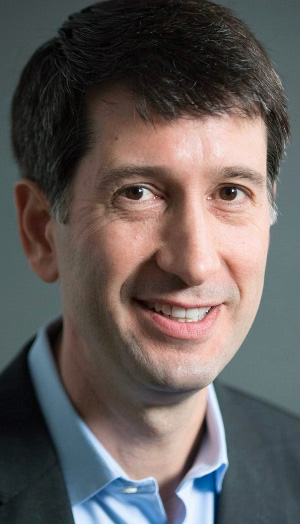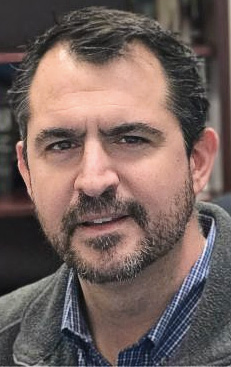

 The modus operandi of the Internet Corporation for Assigned Names and Numbers (ICANN) is achieving consensus. This also holds true for the principal rights protection mechanism that emerged from a two-year round of debates organized by the World Intellectual Property Organization (WIPO) that ICANN implemented in 1999 as the Uniform Domain Name Dispute Resolution Policy (UDRP). Consensus rules; not precedent, although consensus inevitably becomes that.
The modus operandi of the Internet Corporation for Assigned Names and Numbers (ICANN) is achieving consensus. This also holds true for the principal rights protection mechanism that emerged from a two-year round of debates organized by the World Intellectual Property Organization (WIPO) that ICANN implemented in 1999 as the Uniform Domain Name Dispute Resolution Policy (UDRP). Consensus rules; not precedent, although consensus inevitably becomes that.
 Here's another example of a domain name dispute where the top-level domain (TLD) was essential to the outcome of the case -- because it formed a part of the complainant's trademark: mr.green. In this decision under the Uniform Domain Name Dispute Resolution Policy (UDRP), the panel joined a short but (slowly) growing list of disputes in which the TLD plays a vital role.
Here's another example of a domain name dispute where the top-level domain (TLD) was essential to the outcome of the case -- because it formed a part of the complainant's trademark: mr.green. In this decision under the Uniform Domain Name Dispute Resolution Policy (UDRP), the panel joined a short but (slowly) growing list of disputes in which the TLD plays a vital role.
 Complainants have standing to proceed with a claim of cybersquatting under the Uniform Domain Name Dispute Resolution Policy (UDRP) if the accused "domain name is identical or confusingly similar to a trademark or service mark in which the complainant has rights" (4(a)(i) of the Policy). Quickly within the first full year of the Policy's implementation (2000) Panels construed "rights" to include unregistered as well as registered marks, a construction swiftly adopted by consensus.
Complainants have standing to proceed with a claim of cybersquatting under the Uniform Domain Name Dispute Resolution Policy (UDRP) if the accused "domain name is identical or confusingly similar to a trademark or service mark in which the complainant has rights" (4(a)(i) of the Policy). Quickly within the first full year of the Policy's implementation (2000) Panels construed "rights" to include unregistered as well as registered marks, a construction swiftly adopted by consensus.
 A look into the past reveals that continuous developments in weaponry technology have been the reason for arms control conventions and bans. The banning of the crossbow by Pope Urban II in 1096, because it threatened to change warfare in favour of poorer peasants, the banning of poisoned bullets in 1675 by the Strasbourg Agreement, and the Geneva protocol banning the use of biological and chemical weapons in 1925 after world war 1, all prove that significant technological developments have caused the world to agree not to use certain weapons.
A look into the past reveals that continuous developments in weaponry technology have been the reason for arms control conventions and bans. The banning of the crossbow by Pope Urban II in 1096, because it threatened to change warfare in favour of poorer peasants, the banning of poisoned bullets in 1675 by the Strasbourg Agreement, and the Geneva protocol banning the use of biological and chemical weapons in 1925 after world war 1, all prove that significant technological developments have caused the world to agree not to use certain weapons.
 Recently, a colleague in the Bellisario College of Communications asked me who gets a freedom boost from the FCC's upcoming dismantling of network neutrality safeguards. He noted that Chairman Pai made sure that the title of the FCC's Notice of Proposed Rulemaking is: Restoring Internet Freedom. My colleague wanted to know whose freedom the FCC previously subverted and how removing consumer safeguards promotes freedom.
Recently, a colleague in the Bellisario College of Communications asked me who gets a freedom boost from the FCC's upcoming dismantling of network neutrality safeguards. He noted that Chairman Pai made sure that the title of the FCC's Notice of Proposed Rulemaking is: Restoring Internet Freedom. My colleague wanted to know whose freedom the FCC previously subverted and how removing consumer safeguards promotes freedom.
 Steeped deep in discussions around the European Union's General Data Protection Regulation (GDPR) for the past several months, it has occurred to me that I've been answering the same question for over a decade: "What happens if WHOIS data is not accessible?" One of the answers has been and remains the same: People will likely sue and serve a lot of subpoenas. This may seem extreme, and some will write this off as mere hyperbole, but the truth is that the need for WHOIS data to address domain name matters will not disappear.
Steeped deep in discussions around the European Union's General Data Protection Regulation (GDPR) for the past several months, it has occurred to me that I've been answering the same question for over a decade: "What happens if WHOIS data is not accessible?" One of the answers has been and remains the same: People will likely sue and serve a lot of subpoenas. This may seem extreme, and some will write this off as mere hyperbole, but the truth is that the need for WHOIS data to address domain name matters will not disappear.
 Given that it's been a few years since my last domain name year in review, I've really enjoyed looking back at this year's biggest domain name stories and seeing how this industry has evolved. This year, in particular, has seen some notable changes which are likely to impact the domain name landscape for years to come. So without further ado, here is my list for 2017.
Given that it's been a few years since my last domain name year in review, I've really enjoyed looking back at this year's biggest domain name stories and seeing how this industry has evolved. This year, in particular, has seen some notable changes which are likely to impact the domain name landscape for years to come. So without further ado, here is my list for 2017.
 As we enter the seventh round of the net neutrality fight, advocates continue to make the same argument they've offered since 2002: infrastructure companies will do massive harm to little guys unless restrained by strict regulation. This idea once made intuitive sense, but it has been bypassed by reality. ... When Tim Wu wrote his first net neutrality paper, the largest telecoms were Verizon, AT&T, and SBC; they stood at numbers 11, 15, and 27 respectively in the Fortune 500 list.
As we enter the seventh round of the net neutrality fight, advocates continue to make the same argument they've offered since 2002: infrastructure companies will do massive harm to little guys unless restrained by strict regulation. This idea once made intuitive sense, but it has been bypassed by reality. ... When Tim Wu wrote his first net neutrality paper, the largest telecoms were Verizon, AT&T, and SBC; they stood at numbers 11, 15, and 27 respectively in the Fortune 500 list.
 History, it has been said, repeats itself. The same can be said of domain name disputes, as demonstrated by a pair of cases involving the same trademark ("Panavision") filed more than 20 years apart with remarkably similar facts. I can't hear the name "Panavision" without thinking about the origins of domain name disputes, so a decision involving panavision.org - coming more than two decades after litigation commenced over panavision.com - immediately made me nostalgic.
History, it has been said, repeats itself. The same can be said of domain name disputes, as demonstrated by a pair of cases involving the same trademark ("Panavision") filed more than 20 years apart with remarkably similar facts. I can't hear the name "Panavision" without thinking about the origins of domain name disputes, so a decision involving panavision.org - coming more than two decades after litigation commenced over panavision.com - immediately made me nostalgic.
 Plaintiff anti-malware software provider sued defendant -- who also provides software that protects internet users from malware, adware etc. -- bringing claims for false advertising under the Section 43(a) of Lanham Act, as well as other business torts. Plaintiff claimed that defendant wrongfully revised its software's criteria to identify plaintiff's software as a security threat when, according to plaintiff, its software is "legitimate" and posed no threat to users' computers.
Plaintiff anti-malware software provider sued defendant -- who also provides software that protects internet users from malware, adware etc. -- bringing claims for false advertising under the Section 43(a) of Lanham Act, as well as other business torts. Plaintiff claimed that defendant wrongfully revised its software's criteria to identify plaintiff's software as a security threat when, according to plaintiff, its software is "legitimate" and posed no threat to users' computers.